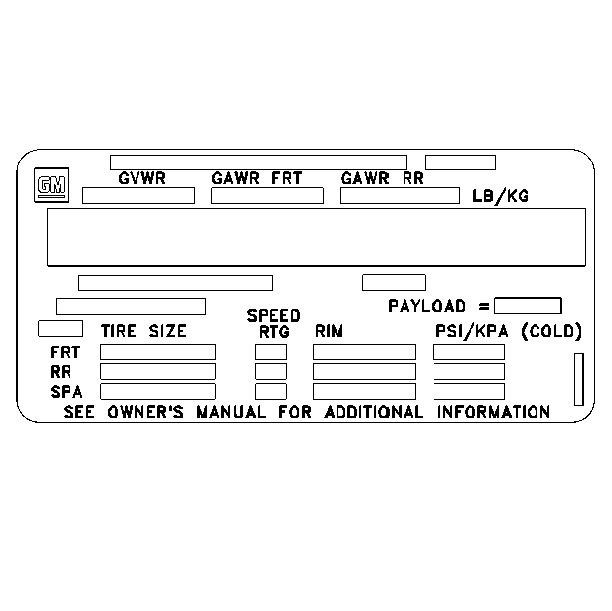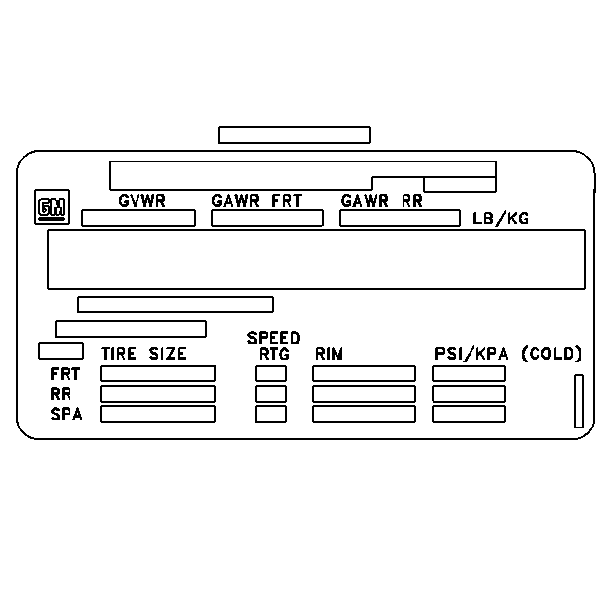

The vehicle certification label displays the following assessments:
| • | The gross vehicle weight rating (GVWR) |
| • | The gross axle weight rating (GAWR) |
| • | The vehicle payload rating |
| • | The original equipment tire sizes and the recommended tire pressures |
Gross vehicle weight (GVW) is the weight of the vehicle and everything the GVW carries. Include the following items when figuring the GVW:
| • | The base vehicle weight (factory weight) |
| • | The weight of all vehicle accessories, such as the winches or the plows |
| • | The weight of the driver and the passengers |
| • | The weight of the cargo |
The gross vehicle weight must not exceed the GVWR.
The front GAW is the weight exerted on the front axle. The rear GAW is the weight exerted on the rear axle. The front and the rear gross axle weights must not exceed the front and the rear gross axle weight ratings.
The payload rating defines the vehicle's maximum allowable cargo load. The cargo load includes the driver and the passengers. The payload rating is based on the vehicle's factory installed equipment. Deduct from the payload rating the weight of accessories added to the vehicle after the final date of manufacture .
The vehicle may have a gross combination weight rating (GCWR). The GCWR refers to the total maximum weight of the loaded tow vehicle (including driver and passengers) and a loaded trailer.
The vehicle's tires must be the proper size and properly inflated for the load the vehicle is carrying. For more information on tires, refer to Tire Inflation Pressure Specifications in Maintenace and Lubrication.
